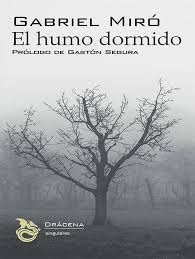
Idioma original: Español
Year of publication: 1918-1919
Valuation: Advisable
This is the third book I have read by Gabriel Miró and, may the Miroists (if they exist) forgive me because I get the feeling that this is not very academic, I must say that it is the one I liked the most.
It may be that I have become accustomed to this peculiar style, to this “lack of action”, to these impressionist landscapes, but I am more inclined to think that Miró’s style is better suited to short texts, prints or portraits than to the pure and hard novel.
As is usual in Gabriel Miró, in the texts of The sleeping smoke We do not find a purely novelistic action (although some of them could form small news) nor great psychological penetration into the characters. The author’s ethical and aesthetic choice is to show reality through poetic prose, the construction of images and the transmission of sensations.
Is this feeling only from a distance or remembering what we felt, approaching it with a new lens? We will never fully understand, because there are episodes and areas of our life that are not fully seen until we contemplate them and relive them through memory.
Well, we could say that Miró is a kind of Mediterranean Marcel Proust, but without the Frenchman’s scalpel with his characters.
Returning to The sleeping smoke, The first block of texts contains a series of scenes from childhood and adolescence. These are initiation-oriented texts in which the narrator discovers, amidst the sleeping smoke, the world of adults, love, death, nostalgia, etc. In addition to the impressionist nature of the texts, the use of techniques close to cinematography is striking in this block. In particular, many of the descriptions of places or landscapes seem like travelling shots that the author made with a hand-held camera.
From this part I stay with The mourner and the parsley, text that borders on the gothic due to the use of childhood fears and a mysterious character, with the sensual The feeling of innocence and with Mauro’s sister and us, in which the end of innocence is shown in an extremely beautiful and sad way.
The second block, made up of ten texts, has Holy Week as its central theme. Beginning with Palm Sunday, the author dedicates a text to each day of the week, in which he mixes the reinterpretation of the events narrated by the Bible, the liturgy and the celebration of Holy Week in the present day (in 1919, of course). He closes with a humorous/popular text about Saint John, Saint Peter and Saint Paul and a hybrid between Mironian biography, legend and the “protohistory” of Spain through Saint James the Apostle.
Once again, it should be remembered that Miró does not delve into the psychology of biblical characters, but rather reinterprets the events bathed in the light of landscapes and sensations. In this sense, the text dedicated to Holy Saturday stands out above all others for its image of Joseph of Arimathea in front of the tomb of Jesus, facing death and facing his own faith.
In short, I don’t know if The sleeping smoke It will be part of Gabriel Miró’s “canonical texts”. I don’t really care, here we are also going to be moved by sensations and the one that comes from reading it is more than pleasant.
Also by Gabriel Miró at ULAD: The novel of Oleza and The ashes of the cemetery
Source: https://unlibroaldia.blogspot.com/2024/09/gabriel-miro-el-humo-dormido.html


